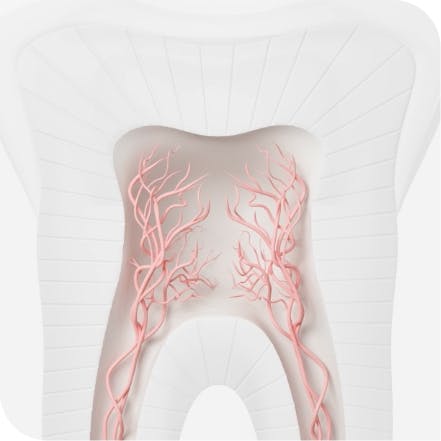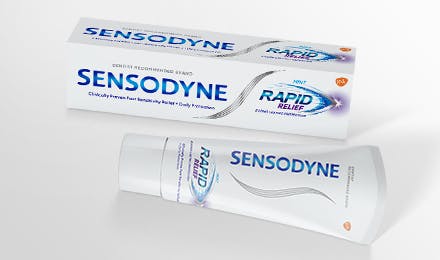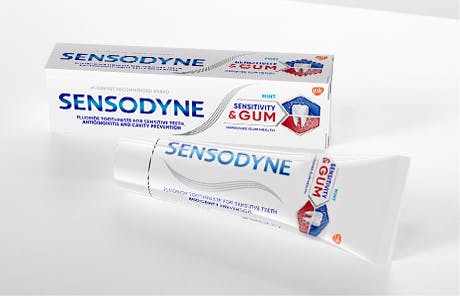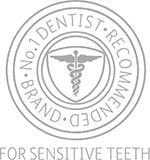Dental Sealants vs. Fillings

If you’re looking to improve your oral health, your dentist may recommend sealants and fillings as a preventive or restorative dental treatment plan. Sealants protect teeth from harmful bacteria while fillings repair cavities and fix minor chips and cracks.1,2 See how they differ and how they might help you protect the surfaces of your teeth, even if you have sensitive teeth.
What Are Dental Sealants?
A dental sealant is a thin liquid coating that is painted onto the chewing surfaces of your teeth.1 Sealants form a physical barrier on the tooth surface.3 The most common materials used for sealants are resins derived from synthetic or natural plant sources, and glass ionomers, which are a form of glass powder.1
Sealants are commonly placed on the back teeth, which have deep grooves that are used for chewing; when food and bacteria are trapped in these grooves, tooth decay and cavities can occur.1 Dentists recommend sealants for primary (baby teeth) and permanent molars in children and adolescents ages 6 and 14.3 This age range is when they might be most prone to getting cavities.1
Advantages and Disadvantages of Sealants
Sealants are an easy and convenient way to protect your teeth: it only takes a few minutes for a dentist to apply sealants to your teeth.1 Your dentist will apply a small amount of sealant material onto the biting surfaces of your teeth, then shine a curing light to harden the material so it stays put.1
However, sealants only last about five years; you may need to have your sealants reapplied every now and then.1 In addition, sealants cannot be placed on teeth that have existing decay: these teeth will need their cavities restored and must be treated with dental restorative materials instead.1
What Are Dental Fillings?
Dental fillings are used to fill in the spaces on your teeth that is otherwise caused by chips, cracks or cavities.2 There are two types of fillings: direct fillings, which are directly applied to your teeth, and indirect fillings, which may require impressions but are typically made outside of your mouth before they are applied to your teeth.2
Direct fillings are usually made from similar materials as sealants, with resin and glass ionomer, while indirect fillings can be made from materials such as gold or porcelain.2
Advantages and Disadvantages of Fillings
Fillings may last longer than sealants; it’s not uncommon to see fillings lasting 10-20 years or more.2 In addition, fillings can strengthen weakened teeth that otherwise have been damaged by tooth decay, helping to restore your ability to chew food with full function.2
After a dental filling procedure, it’s normal to experience minor teeth sensitivity and gum soreness in the area. These side effects are temporary and should go away in a week or two. However, dental fillings can sometimes come with complications: a toothache after the procedure might indicate more serious dental issues such as the need for root canal treatment.2 Pain while biting down and additional sensitivity to hot and cold temperatures may also occur.2 Let your dentist know if you are experiencing sensitivity.
Sealants and Fillings for Sensitive Teeth
Experiencing sensitive teeth is common, and treatments are available for tooth sensitivity, depending on the underlying cause and severity of the condition. You might need sealants and fillings if you have sensitive teeth.4 Some of these causes may include exposed dentin due to receding gums or enamel erosion or nerve damage requiring root canal therapy.4
If you’re experiencing tooth sensitivity while eating hot or cold foods, make the switch to a toothpaste that can provide sensitive relief and lasting sensitivity protection. Sensodyne Rapid Relief toothpaste has a unique formula with a clinically proven ingredient that provides lasting protection against hypersensitivity.* If the pain and sensitivity still persist after 4 weeks of use, it may indicate a serious problem that may need prompt care by a dentist.
*With twice daily brushing
Source Citations:
- Sealants. Cleveland Clinic. https://my.clevelandclinic.org/health/treatments/10912-sealants/. Accessed 6/14/2024.
- Dental Fillings. Cleveland Clinic. https://my.clevelandclinic.org/health/treatments/17002-dental-fillings/. Accessed 6/14/2024.
- Dental Sealants. American Dental Association. https://www.ada.org/resources/ada-library/oral-health-topics/dental-sealants/. Accessed 6/14/2024.
- Sensitive Teeth: Why They Hurt and How to Stop the Pain. Johns Hopkins Medicine. https://www.hopkinsmedicine.org/health/conditions-and-diseases/sensitive-teeth/. Accessed 6/14/2024.









